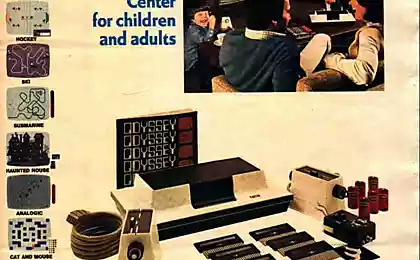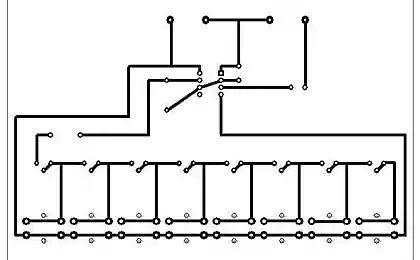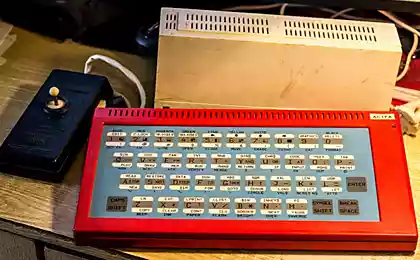1530
The legendary Robert Widlar. Paranoid and hermit
Name Robert Widlar became known during the time of the so-called first semiconductor boom, he took an active part in many research works related to operational amplifiers. Surely we can say that he was one of the most important figures in the early start-ups in Silicon Valley. These startups like Fairchild and National Semiconductor have not gone without its breakthrough ideas and developments. Paranoid and hermit, sometimes simply unbearable type of a lover to indulge in alcoholic beverages ... and brilliant engineer - Bob Widlar! According to colleagues, Bob could ruffle and razdrakonit anyone, but they had to put up with his antics, as the electronics in those days was a region of "creative individuals", one a loner and was Robert.
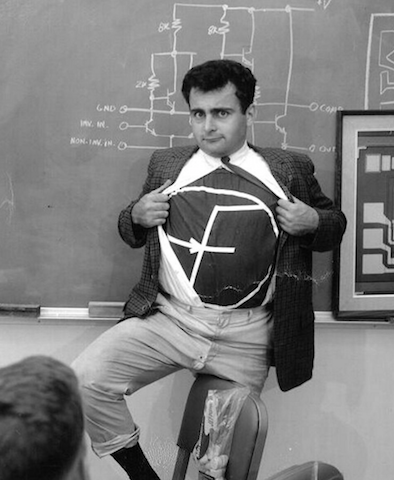
Who has not heard of such a process as "vidlarizatsiya"? The process is the destruction of defective parts and the non-working prototype is not more than a hammer. Widlar was very intolerant of this kind of "malfunction", so, armed with a hammer, mercilessly send them to the landfill, "... the ax hanging in his office in a prominent position and concurrently served Removers: Widlar cut off them stitched corners securities Perhaps these securities was. lot: Widlar made copies of everything that he had to read. " An interesting way to Bob struggled "with loud sounds," who simply could not stand. Personally myself in the office of the engineer installed a device that if the visitor raised his voice and began to scream at Widlar issued by a piercing whistle. «The Hassler» - as colleagues have called this product (from angl.- pester)
.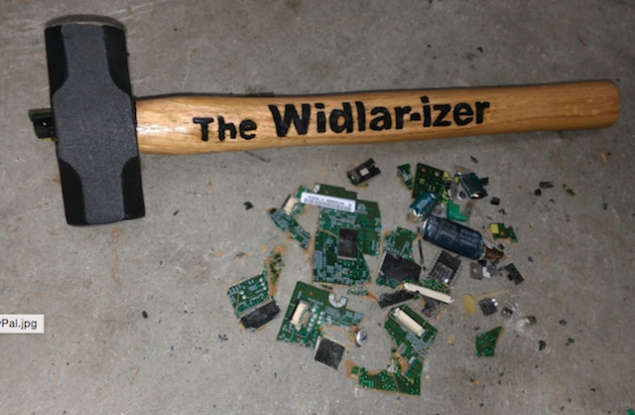
At 60 years young specialist Robert Widlar became the head of the department of linear integrated circuits in the Fairchild
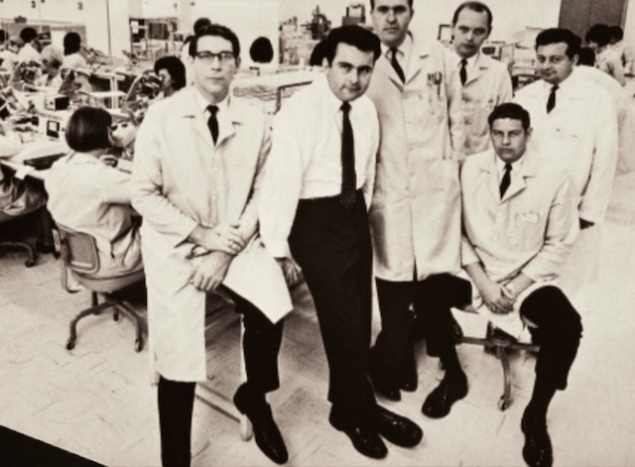
Bob Widlar - renegade genius
From 1961 until 1963 Fairchild was one of the most prominent companies in the history of business. There were gathered numerous scientific and business talents "high concentration" ... "achieving success in the business world, they asked themselves: what would happen if they were able to stay together and to rule the world of semiconductors than one generation ..?" But Now all the same about Bob Widlar.
"... The door opened. The first man passed through it was Bob Widlar, renegade genius. Looking back on his past boozing, fighting and disorderly behavior, can not be at the same time not to notice that Widlar was one of the most creative minds in the history of technology. Its strong side were linear devices - non-digital circuit such as amplifiers, which were the last best canvases of outstanding artists in electronics
".
Golden Years Fairchild - it is not only during development technologies historical significance, but also crazy partying, partying, fun blissfully: "... were endless drunken partying in a nearby saloon Wagon Wheel, which lured workers companies, destroys families, supported by hatred, but with time - workers entice competitors. " Regulars such was the design genius Robert Widlar. He was considered the most insane of the inhabitants of Silicon Valley. He could in anger because of the failure of the present invention to go out and cut down trees that were planted for the improvement of the environment. Napodpitku Widlar could be involved in fights to the blood of its competitors on the demonstration area of the exhibition industry.
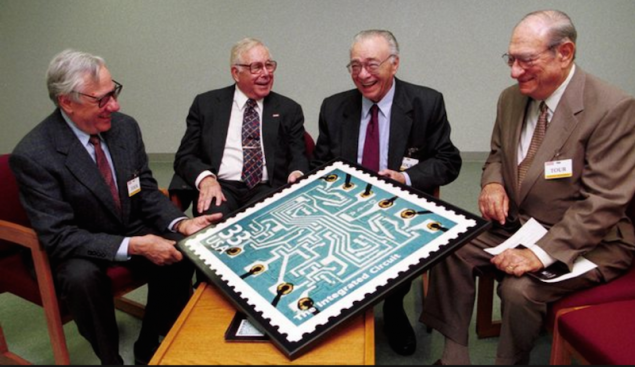
Bob is very worried about his freedom, even more than his linear devices. Restrictions anything was not his nature. Lack of money was also a kind of limitation, this was the reason that in 1966 and walked away with Widlar Fairchild Semiconductor in a small semiconductor company National Semiconductor. It was his love of freedom was demonstrated to them when he was forced to go to fire and fill the six-list of questions about the dismissal. On each page of large print Widlar wrote - I want to become rich and modestly signed at the end of
«X»
A little biography
. Robert Widlar born November 30, 1937, in Cleveland (Ohio). His family did not need a father - with German roots, the mother - Czech. Walter Widlar of influential German family, a radio engineer was self-taught, published in professional and local press, was an expert on frequency modulation. For 15 years, Bob Jr., following in the footsteps of his father, engaged in repairing televisions, successfully mastered the basics of radio engineering. At the age of 45 years, Bob's father died of a massive heart attack.

Robert Widlar took his father's place in a large family, he had to earn a living, he was initially engaged in cleaning, repairing radio later. After finishing Jesuit school of St. Ignatius in Cleveland, he worked for a year as a technician in the company, where he once worked as his father, and in 1958 he enrolled as a volunteer in the military and the US Air Force and served two full years as an instructor for the radio-electronic equipment based in Colorado. In 1960, management training Air Force issued its first book edition of 100 copies. It was a textbook on semiconductor devices.
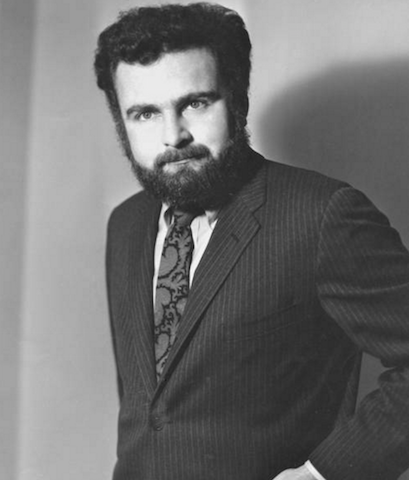
In 1962, Bob graduated from the University of Colorado Boulder. In 1961, Robert retired from the Air Force and got an engineer to instrument company Ball Brothers Research Corporation. The company, working on the NASA orbital station control devices for the first time faced with the problem of the radiation resistance of transistors. To find out, I had to meet with the leaders of the company Amelco (the only company at the time, which produced a transistor with a certified radiation resistance). Jean and Ernie Sheldon Roberts were in the past, the founders of Fairchild Semiconductor. After the meeting, Widlar decided to be in the center of events related to electronics, that is, to begin work on semiconductor industries. Fairchild Semiconductor company has violated his professional ethics and lured Robert from his client.
In late 1963, Bob moved to the southwest United States, California (Mountain View), in Silicon Valley. As mentioned earlier, where he began working at Fairchild and led linear integrated circuits division.
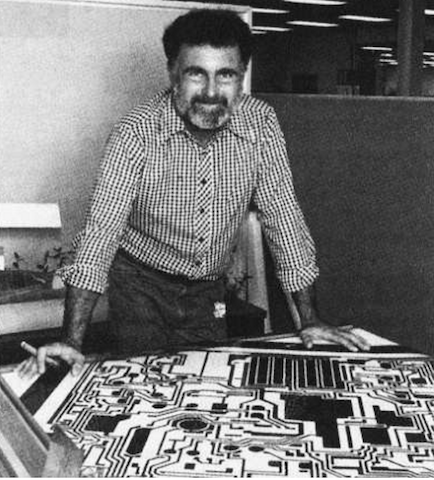
In the 26 years Robert Widlar developed its first monolithic IC op amp, mA702. Its price was $ 300 per piece. Later Bob scheme has improved, and saw the light of the new operational amplifier, which received the designation mA709, sold a Shelter for $ 70 apiece. After such success in the economic development plan, Widlar asked for a raise. After refusing, he resigned. Over three years of work in this company Widlar developed and implemented in the production of its worldwide "linear series": mA702 (14OUD1) mA709 (153UD1) mA710 (521SA2) mA711 (521SA1) mA723, mA726. In general it was released for each position from 10 to 100 mln. Pieces.

mA700
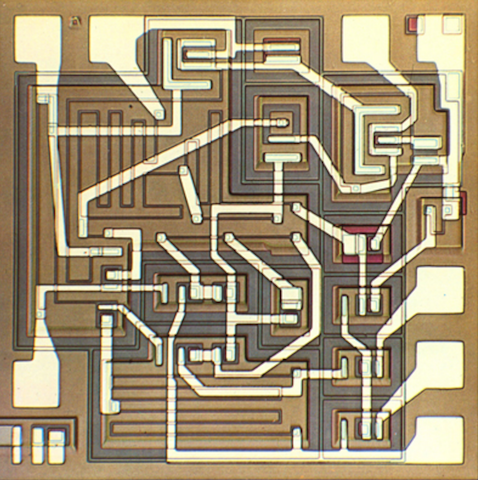
mA709
He joined the company National Semiconductor, where Widlar were very happy, because even then it was considered a man, laid the foundation for the development of analog circuits.
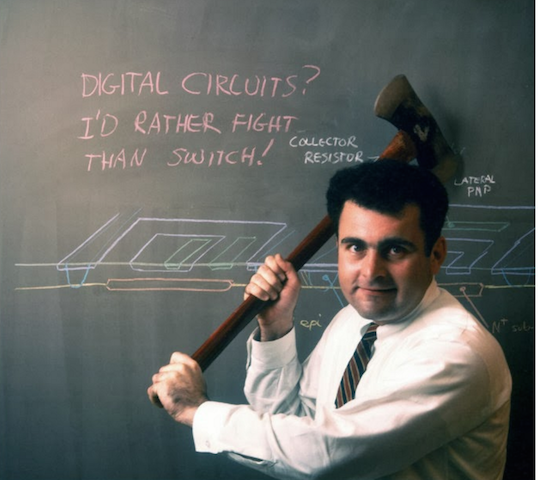
In 1966, he became one of the founders of National Semiconductors Linear IC Group (abbreviated NS) - not only purely semiconductor firms, but specialized linear (Santa Clara, CA). In 1967 Widlar worked for National Semiconductor has a more refined Shelter, which became known as the LM101. Widlar took in NS as Director of promising schemes and engaged in the development of next-generation chip: LM101 (153UD2), LM108 (104UD14), LM118 (140UD10,) LM102, LM109, LM111 (521SA3)
.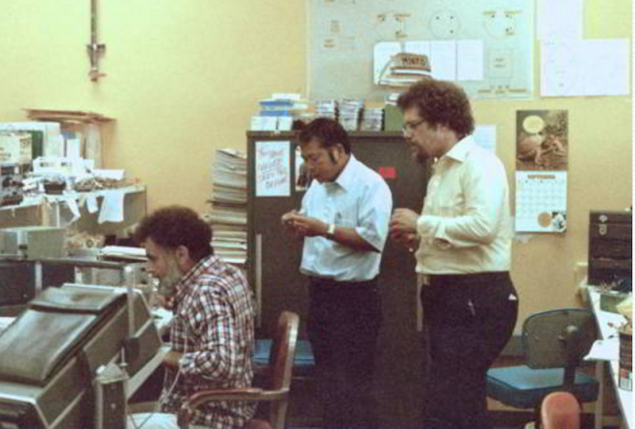
Fun fact
. Fullagar took myself to develop the OS. He expanded the tolerances of manufacturing processes, setting the inside of the chip capacitor 30 pikofaradny. The input stage has been improved by adding a transistor pair circuit. This addition has improved the repeatability of chips. As a result, it developed a new chip mA741, which became the standard for operational amplifiers. This chip and its variants sold hundreds of millions of pieces. For $ 300, you could buy almost 741 thousand chips.
LM101 (153UD2)
Widlar developed an operational amplifier LM101, which was the first of the second generation OC, a block diagram of LM101 was the basis for all subsequent purpose operational amplifiers. Active load LM101 provided great gains of each stage, the input emitter followers, laden with a differential stage in the pnp-transistors, in turn, provided a wide range of acceptable input voltage and low bias currents.
Gain DC has reached 500, 000 (50, 000-100, 000 of the first generation of amplifiers). The input stage is protected from the high voltage output stage had full protection against short circuits. We used two voltage gain stage, the so-called two-stage scheme. LM101 was stable when using only external corrective capacity of only 30pF.
Here is Widlar and made an error when he tried not to pack the container on the crystal of the operational amplifier. A year later, as mentioned above, the gap made up of competitors The Fairchild, it was released roughly A741- clone LM101 c internal frequency correction. This simple-to-use IC market has won universal OU.
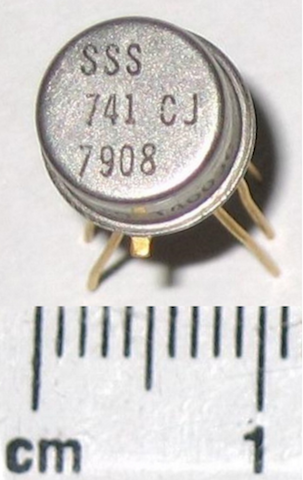
A741
In subsequent years (1968 - 1969) Widlar with Telbert developed and debugged in the production of new active instruments super-beta transistors , mnogokollektorny bipolar transistor and a field effect transistor epitaxial
In 1969 Widlar developed the first operational amplifier to the super-beta transistors, which was named LM108
In late 1969 a new operational accelerator, the functional equivalent of LM101 on new element base has been released -. LM101A
LM101 version was developed in 1970 with built-correcting capacity - LM107
Shestimasochny process Telberta later allowed to implement on a single chip, and the pinch resistors and field-effect transistors, and the super-beta transistors, and side the pnp transistors with a gain of more than 100. The current number of transistors serving current sources LM101A, it was reduced for mnogokollektornyh by using pnp-transistors. Input impedance operating the accelerator, do not use the inlet component transistors, the first time exceeded the threshold of 1 MW.
Since 1963 to 1971, Robert Widlar written over 50 articles on the subject line, where he described the "innards" of EI methods for their use. Widlar patented integral structure: Lateral p-n-p, the support member band-gap, beta super-FET, low voltage (1, 2) amplifiers and other
. The company National Semiconductor designed Widlar released LM100 , which became the first in the history of integrated voltage stabilizer "... LM100 to stabilize the voltage from 2 to 30V c total error in the military temperature range (55 to 125C) not more than . 1% reference voltage source spoke on 6.3V zener diode regulating element - a relatively low-power transistor component, so in practice the LM100 was used not as a finished stabilizer, and a control circuit external power transistor Demand surpassed the most optimistic expectations "
In 1970 he was made LM109 - the world's first integrated three-terminal regulator to 5V, which was a direct predecessor of A7805
IC LM109 LM100 differed from the limit values for current and power, ease of application, a reference voltage in the OS no longer served a zener diode, and bandgap Widlar

simplest scheme of the bandgapa Widlar
Bandgap Widlar - transistor voltage reference, is approximately equal to the width of the band gap of silicon (about 1, 2B). Widlar was the first one who designed the first practical scheme operates on the principle of bandgap (which was formulated in 1964 by David Hilbiberom). LM109 was the first chip with integrated bandgapom.
In 1971, it was designed by LM113, which was a dvuhvyvodnoy precision diode bandgape Widlar. Replacing high (about 6V) at a low voltage zener (1 2B) made it possible to create bandgap stabilizers economical low output voltage (3, 3B, 2, 5B and below) and a low voltage power amplifier (1, 1B).
In the early 70 Robert Widlar disappeared. In 1971, the legend moved to Mexico, then he started to work in his new company Linear Technology Corp (abbreviated LTC). There were rumors that Mexico's tax burden was "softer" than the United States.
Many call Robert Widlar - Steve Jobs 70 years. He was a genius, but at the same time, the paranoid. His fondness for a glass repeatedly mentioned in the pages of his biography. But, surprisingly, he was extraordinarily functional, could the days and months to work on the chip ... and then went into the bout. He was sick of work without feeling fatigue - worked
. Although Robert and came into the electronics to the spread of means of computer simulation of electronic circuits, it is up to the end of his life refused to use them.
Owning traditional skills of mathematical analysis, he could for a few hours, without interruption, to engage in the calculations, and then without any mistakes when to present the results on paper. Widlar wanted to control everything; the entire product development cycle, including the sale were to be under its control. When developing the scheme, I wrote to them all the technical documentation, up to the detailed guidelines for their application.
«Widlar called this approach by minimizing future phone calls. But, despite this, the colleague is not only called, but Widlar wrote many letters with questions. Accurate and early response Widlar spawned in the professional environment of the opinion that he wrote the answers to each recipient. The letter Widlar actually consisted of standard paragraphs reprinted from compiled them abstract. After receiving a letter with a question (a question inevitably repeated), only he pointed Widlar Secretary abstract paragraphs that should reprint, and then signed a ready answer. »
After the departure of Bob Fairchild problem with alcohol is even more intensified. He spent the night in the bars, get drunk to semi-conscious state.
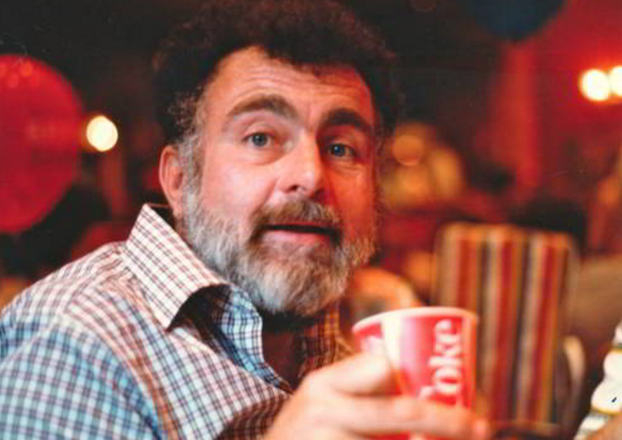
He was cocky, one night showdown, after drinking, "invited" Mike Scott (future president of Apple) to go to talk, the conversation ended with a knockout Widlar. Later Widlar began to drink constantly, his antics were covered and even rescues him from arrest. This is what recalled Spork drunkenness Widlar: "... He drank too much, and I am forced to tolerate it I had no choice. This guy, for some time, and was National Semiconductor Once on the Paris seminar we collected about 1,200 engineers. France and Belgium, we made the mistake of opening the access to the bar at lunchtime - in France was so taken
.
And so he began to drink gin, neat, big glasses, and I realized - to be trouble. In the afternoon he returned to the room with a full glass of gin I got to Peter Sprague, who was sitting next to Widlar, and said to him: Peter, get rid of this gin before Widlar fall under the table. Poor Peter sacrificed himself and drank it all down to the bottom. At the beginning of his speech Widlar habitually reached for the glass, but it was empty. Видлар закричал, что он не произнесет и слова, пока ему не нальют стакан. Выбора не было, пришлось налить ему полный стакан, и он продолжил. Он еле стоял на ногах, но что интересно — даже в таком состоянии он очаровывал слушателя. А потом я повез его в гостиницу на метро. Он стоял, шатаясь, у самого края платформы, а я стоял сзади, готовый схватить его. Упади он тогда на рельсы, компания бы умерла вместе с ним".
Легендарная овца Роберта Видлара
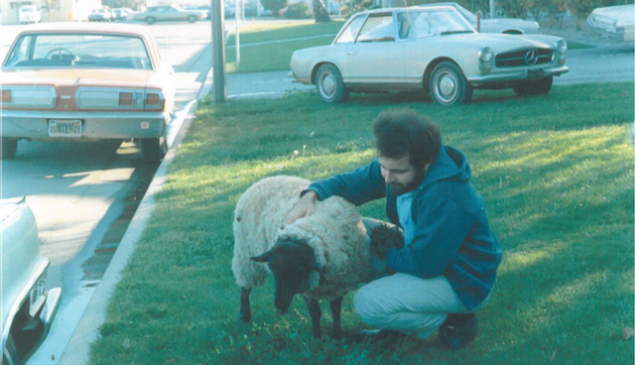
В конце 1970 года Видлар решил уйти из компании National Semiconductor. Компания, в целях экономии, отказалась от стрижки газонов перед главным зданием… Боб решил сделать подарок компании). За $60 он купил у знакомого фермера овцу и, будучи недовольным видом заросшей поляны (где он парковал свой двухместный мерседес), пустил животное «подстригать» газон. Видлар для огласки пригласил репортера из San Jose News, который написал статью с комментарием Боба о том, как "… овца оставила без работы множество садовников, но при этом она не только может стричь, она еще и может удобрять!"
Овца была похищена ночью. Вокруг этой истории много легенд и мифов. Кто-то говорил, что Видлар сам отвез овцу и пропил ее в одном из баров, по другой версии овца и вовсе не была овцой, а являлась козой, или, что еще лучше — козлом.
Последние 20 лет своей жизни Видлар работал по контрактам с National Semiconductor и занимался какой-то неопределенной отработкой процессов производства. С 1971 года до конца 1989 года он оформил всего 8 патентов на изобретения. После увольнения, он получил на руки миллион долларов, уехал в Мексику и поселился в Пуэрто-Вальярта.
В тридцать три года Видлар, наконец-то получил ту свободу, о которой мечтал. Он не работал на постоянной работе. Видлар продолжил в одиночку работать над сложными вопросами схемотехники, периодически читая лекции в США.
В 1974 году Спорку все же удалось уговорить Видлара вернуться в National Semiconductor. Видлар стал независимым консультантом компании, при этом проживал в Мексике. За период с 1974 по 1991 годы Видлар разработал для National Semiconductor десятки новых проектов.
В 1976 году был разработан LM10. Это микромощный операционный усилитель и источник опорного напряжения, который способен работать при напряжении питания от 1, 1 до 40 В, первый операционный усилитель, полностью пригодный для работы от единственного гальванического элемента на 1, 4 В.
После был разработан LM11 — прецизионный биполярный ОУ, который был рассчитан на электрометрические измерения.
В 1987 году в производство был запущен первый мощный (10 А, 80 Вт) операционный усилительLM12.
27 февраля 1991 года тело Видлара было найдено в окрестностях Пуэрто-Вальярты. Была выдвинута версия, что Боб скончался от сердечного приступа во время пробежки по пляжу. Но Боб Пиз отверг эту версию, так как обычно Видлар бегал в горах, возможно приступ застал его, когда он спускался вниз по склону, упал и умер. Факт остается фактом, легендарной личности не стало в возрасте 53 лет. Как уверял сам Видлар, в последнее время он остепенился, даже завел постоянные отношения с женщиной, перестал употреблять алкоголь. Но предрасположенность к болезням сердца и образ жизни в молодые годы, увы, не прошли «бесследно».
Он не спился и не опустился. Ни в коем случае. Он был в порядке, он был в здравом уме смерть пришла, когда он жил достойно и трезво.Непредсказуемость, гениальность Роберта Видлара в перемешку с его любовью к алкоголю, отшельническому образу жизни сделали его, еще при жизни, легендой.
Источник: geektimes.ru/company/ua-hosting/blog/273638/

Who has not heard of such a process as "vidlarizatsiya"? The process is the destruction of defective parts and the non-working prototype is not more than a hammer. Widlar was very intolerant of this kind of "malfunction", so, armed with a hammer, mercilessly send them to the landfill, "... the ax hanging in his office in a prominent position and concurrently served Removers: Widlar cut off them stitched corners securities Perhaps these securities was. lot: Widlar made copies of everything that he had to read. " An interesting way to Bob struggled "with loud sounds," who simply could not stand. Personally myself in the office of the engineer installed a device that if the visitor raised his voice and began to scream at Widlar issued by a piercing whistle. «The Hassler» - as colleagues have called this product (from angl.- pester)
.

At 60 years young specialist Robert Widlar became the head of the department of linear integrated circuits in the Fairchild

Bob Widlar - renegade genius
From 1961 until 1963 Fairchild was one of the most prominent companies in the history of business. There were gathered numerous scientific and business talents "high concentration" ... "achieving success in the business world, they asked themselves: what would happen if they were able to stay together and to rule the world of semiconductors than one generation ..?" But Now all the same about Bob Widlar.
"... The door opened. The first man passed through it was Bob Widlar, renegade genius. Looking back on his past boozing, fighting and disorderly behavior, can not be at the same time not to notice that Widlar was one of the most creative minds in the history of technology. Its strong side were linear devices - non-digital circuit such as amplifiers, which were the last best canvases of outstanding artists in electronics
".

Golden Years Fairchild - it is not only during development technologies historical significance, but also crazy partying, partying, fun blissfully: "... were endless drunken partying in a nearby saloon Wagon Wheel, which lured workers companies, destroys families, supported by hatred, but with time - workers entice competitors. " Regulars such was the design genius Robert Widlar. He was considered the most insane of the inhabitants of Silicon Valley. He could in anger because of the failure of the present invention to go out and cut down trees that were planted for the improvement of the environment. Napodpitku Widlar could be involved in fights to the blood of its competitors on the demonstration area of the exhibition industry.

Bob is very worried about his freedom, even more than his linear devices. Restrictions anything was not his nature. Lack of money was also a kind of limitation, this was the reason that in 1966 and walked away with Widlar Fairchild Semiconductor in a small semiconductor company National Semiconductor. It was his love of freedom was demonstrated to them when he was forced to go to fire and fill the six-list of questions about the dismissal. On each page of large print Widlar wrote - I want to become rich and modestly signed at the end of
«X»
A little biography
. Robert Widlar born November 30, 1937, in Cleveland (Ohio). His family did not need a father - with German roots, the mother - Czech. Walter Widlar of influential German family, a radio engineer was self-taught, published in professional and local press, was an expert on frequency modulation. For 15 years, Bob Jr., following in the footsteps of his father, engaged in repairing televisions, successfully mastered the basics of radio engineering. At the age of 45 years, Bob's father died of a massive heart attack.

Robert Widlar took his father's place in a large family, he had to earn a living, he was initially engaged in cleaning, repairing radio later. After finishing Jesuit school of St. Ignatius in Cleveland, he worked for a year as a technician in the company, where he once worked as his father, and in 1958 he enrolled as a volunteer in the military and the US Air Force and served two full years as an instructor for the radio-electronic equipment based in Colorado. In 1960, management training Air Force issued its first book edition of 100 copies. It was a textbook on semiconductor devices.

In 1962, Bob graduated from the University of Colorado Boulder. In 1961, Robert retired from the Air Force and got an engineer to instrument company Ball Brothers Research Corporation. The company, working on the NASA orbital station control devices for the first time faced with the problem of the radiation resistance of transistors. To find out, I had to meet with the leaders of the company Amelco (the only company at the time, which produced a transistor with a certified radiation resistance). Jean and Ernie Sheldon Roberts were in the past, the founders of Fairchild Semiconductor. After the meeting, Widlar decided to be in the center of events related to electronics, that is, to begin work on semiconductor industries. Fairchild Semiconductor company has violated his professional ethics and lured Robert from his client.
In late 1963, Bob moved to the southwest United States, California (Mountain View), in Silicon Valley. As mentioned earlier, where he began working at Fairchild and led linear integrated circuits division.

In the 26 years Robert Widlar developed its first monolithic IC op amp, mA702. Its price was $ 300 per piece. Later Bob scheme has improved, and saw the light of the new operational amplifier, which received the designation mA709, sold a Shelter for $ 70 apiece. After such success in the economic development plan, Widlar asked for a raise. After refusing, he resigned. Over three years of work in this company Widlar developed and implemented in the production of its worldwide "linear series": mA702 (14OUD1) mA709 (153UD1) mA710 (521SA2) mA711 (521SA1) mA723, mA726. In general it was released for each position from 10 to 100 mln. Pieces.

mA700

mA709
He joined the company National Semiconductor, where Widlar were very happy, because even then it was considered a man, laid the foundation for the development of analog circuits.

In 1966, he became one of the founders of National Semiconductors Linear IC Group (abbreviated NS) - not only purely semiconductor firms, but specialized linear (Santa Clara, CA). In 1967 Widlar worked for National Semiconductor has a more refined Shelter, which became known as the LM101. Widlar took in NS as Director of promising schemes and engaged in the development of next-generation chip: LM101 (153UD2), LM108 (104UD14), LM118 (140UD10,) LM102, LM109, LM111 (521SA3)
.

Fun fact
. Fullagar took myself to develop the OS. He expanded the tolerances of manufacturing processes, setting the inside of the chip capacitor 30 pikofaradny. The input stage has been improved by adding a transistor pair circuit. This addition has improved the repeatability of chips. As a result, it developed a new chip mA741, which became the standard for operational amplifiers. This chip and its variants sold hundreds of millions of pieces. For $ 300, you could buy almost 741 thousand chips.
LM101 (153UD2)
Widlar developed an operational amplifier LM101, which was the first of the second generation OC, a block diagram of LM101 was the basis for all subsequent purpose operational amplifiers. Active load LM101 provided great gains of each stage, the input emitter followers, laden with a differential stage in the pnp-transistors, in turn, provided a wide range of acceptable input voltage and low bias currents.
Gain DC has reached 500, 000 (50, 000-100, 000 of the first generation of amplifiers). The input stage is protected from the high voltage output stage had full protection against short circuits. We used two voltage gain stage, the so-called two-stage scheme. LM101 was stable when using only external corrective capacity of only 30pF.
Here is Widlar and made an error when he tried not to pack the container on the crystal of the operational amplifier. A year later, as mentioned above, the gap made up of competitors The Fairchild, it was released roughly A741- clone LM101 c internal frequency correction. This simple-to-use IC market has won universal OU.

A741
In subsequent years (1968 - 1969) Widlar with Telbert developed and debugged in the production of new active instruments super-beta transistors , mnogokollektorny bipolar transistor and a field effect transistor epitaxial
In 1969 Widlar developed the first operational amplifier to the super-beta transistors, which was named LM108
In late 1969 a new operational accelerator, the functional equivalent of LM101 on new element base has been released -. LM101A
LM101 version was developed in 1970 with built-correcting capacity - LM107
Shestimasochny process Telberta later allowed to implement on a single chip, and the pinch resistors and field-effect transistors, and the super-beta transistors, and side the pnp transistors with a gain of more than 100. The current number of transistors serving current sources LM101A, it was reduced for mnogokollektornyh by using pnp-transistors. Input impedance operating the accelerator, do not use the inlet component transistors, the first time exceeded the threshold of 1 MW.
Since 1963 to 1971, Robert Widlar written over 50 articles on the subject line, where he described the "innards" of EI methods for their use. Widlar patented integral structure: Lateral p-n-p, the support member band-gap, beta super-FET, low voltage (1, 2) amplifiers and other
. The company National Semiconductor designed Widlar released LM100 , which became the first in the history of integrated voltage stabilizer "... LM100 to stabilize the voltage from 2 to 30V c total error in the military temperature range (55 to 125C) not more than . 1% reference voltage source spoke on 6.3V zener diode regulating element - a relatively low-power transistor component, so in practice the LM100 was used not as a finished stabilizer, and a control circuit external power transistor Demand surpassed the most optimistic expectations "
In 1970 he was made LM109 - the world's first integrated three-terminal regulator to 5V, which was a direct predecessor of A7805
IC LM109 LM100 differed from the limit values for current and power, ease of application, a reference voltage in the OS no longer served a zener diode, and bandgap Widlar

simplest scheme of the bandgapa Widlar
Bandgap Widlar - transistor voltage reference, is approximately equal to the width of the band gap of silicon (about 1, 2B). Widlar was the first one who designed the first practical scheme operates on the principle of bandgap (which was formulated in 1964 by David Hilbiberom). LM109 was the first chip with integrated bandgapom.
In 1971, it was designed by LM113, which was a dvuhvyvodnoy precision diode bandgape Widlar. Replacing high (about 6V) at a low voltage zener (1 2B) made it possible to create bandgap stabilizers economical low output voltage (3, 3B, 2, 5B and below) and a low voltage power amplifier (1, 1B).
In the early 70 Robert Widlar disappeared. In 1971, the legend moved to Mexico, then he started to work in his new company Linear Technology Corp (abbreviated LTC). There were rumors that Mexico's tax burden was "softer" than the United States.
Many call Robert Widlar - Steve Jobs 70 years. He was a genius, but at the same time, the paranoid. His fondness for a glass repeatedly mentioned in the pages of his biography. But, surprisingly, he was extraordinarily functional, could the days and months to work on the chip ... and then went into the bout. He was sick of work without feeling fatigue - worked
. Although Robert and came into the electronics to the spread of means of computer simulation of electronic circuits, it is up to the end of his life refused to use them.
Owning traditional skills of mathematical analysis, he could for a few hours, without interruption, to engage in the calculations, and then without any mistakes when to present the results on paper. Widlar wanted to control everything; the entire product development cycle, including the sale were to be under its control. When developing the scheme, I wrote to them all the technical documentation, up to the detailed guidelines for their application.
«Widlar called this approach by minimizing future phone calls. But, despite this, the colleague is not only called, but Widlar wrote many letters with questions. Accurate and early response Widlar spawned in the professional environment of the opinion that he wrote the answers to each recipient. The letter Widlar actually consisted of standard paragraphs reprinted from compiled them abstract. After receiving a letter with a question (a question inevitably repeated), only he pointed Widlar Secretary abstract paragraphs that should reprint, and then signed a ready answer. »
After the departure of Bob Fairchild problem with alcohol is even more intensified. He spent the night in the bars, get drunk to semi-conscious state.

He was cocky, one night showdown, after drinking, "invited" Mike Scott (future president of Apple) to go to talk, the conversation ended with a knockout Widlar. Later Widlar began to drink constantly, his antics were covered and even rescues him from arrest. This is what recalled Spork drunkenness Widlar: "... He drank too much, and I am forced to tolerate it I had no choice. This guy, for some time, and was National Semiconductor Once on the Paris seminar we collected about 1,200 engineers. France and Belgium, we made the mistake of opening the access to the bar at lunchtime - in France was so taken
.

And so he began to drink gin, neat, big glasses, and I realized - to be trouble. In the afternoon he returned to the room with a full glass of gin I got to Peter Sprague, who was sitting next to Widlar, and said to him: Peter, get rid of this gin before Widlar fall under the table. Poor Peter sacrificed himself and drank it all down to the bottom. At the beginning of his speech Widlar habitually reached for the glass, but it was empty. Видлар закричал, что он не произнесет и слова, пока ему не нальют стакан. Выбора не было, пришлось налить ему полный стакан, и он продолжил. Он еле стоял на ногах, но что интересно — даже в таком состоянии он очаровывал слушателя. А потом я повез его в гостиницу на метро. Он стоял, шатаясь, у самого края платформы, а я стоял сзади, готовый схватить его. Упади он тогда на рельсы, компания бы умерла вместе с ним".
Легендарная овца Роберта Видлара

В конце 1970 года Видлар решил уйти из компании National Semiconductor. Компания, в целях экономии, отказалась от стрижки газонов перед главным зданием… Боб решил сделать подарок компании). За $60 он купил у знакомого фермера овцу и, будучи недовольным видом заросшей поляны (где он парковал свой двухместный мерседес), пустил животное «подстригать» газон. Видлар для огласки пригласил репортера из San Jose News, который написал статью с комментарием Боба о том, как "… овца оставила без работы множество садовников, но при этом она не только может стричь, она еще и может удобрять!"
Овца была похищена ночью. Вокруг этой истории много легенд и мифов. Кто-то говорил, что Видлар сам отвез овцу и пропил ее в одном из баров, по другой версии овца и вовсе не была овцой, а являлась козой, или, что еще лучше — козлом.
Последние 20 лет своей жизни Видлар работал по контрактам с National Semiconductor и занимался какой-то неопределенной отработкой процессов производства. С 1971 года до конца 1989 года он оформил всего 8 патентов на изобретения. После увольнения, он получил на руки миллион долларов, уехал в Мексику и поселился в Пуэрто-Вальярта.
В тридцать три года Видлар, наконец-то получил ту свободу, о которой мечтал. Он не работал на постоянной работе. Видлар продолжил в одиночку работать над сложными вопросами схемотехники, периодически читая лекции в США.
В 1974 году Спорку все же удалось уговорить Видлара вернуться в National Semiconductor. Видлар стал независимым консультантом компании, при этом проживал в Мексике. За период с 1974 по 1991 годы Видлар разработал для National Semiconductor десятки новых проектов.
В 1976 году был разработан LM10. Это микромощный операционный усилитель и источник опорного напряжения, который способен работать при напряжении питания от 1, 1 до 40 В, первый операционный усилитель, полностью пригодный для работы от единственного гальванического элемента на 1, 4 В.
После был разработан LM11 — прецизионный биполярный ОУ, который был рассчитан на электрометрические измерения.
В 1987 году в производство был запущен первый мощный (10 А, 80 Вт) операционный усилительLM12.
27 февраля 1991 года тело Видлара было найдено в окрестностях Пуэрто-Вальярты. Была выдвинута версия, что Боб скончался от сердечного приступа во время пробежки по пляжу. Но Боб Пиз отверг эту версию, так как обычно Видлар бегал в горах, возможно приступ застал его, когда он спускался вниз по склону, упал и умер. Факт остается фактом, легендарной личности не стало в возрасте 53 лет. Как уверял сам Видлар, в последнее время он остепенился, даже завел постоянные отношения с женщиной, перестал употреблять алкоголь. Но предрасположенность к болезням сердца и образ жизни в молодые годы, увы, не прошли «бесследно».
Он не спился и не опустился. Ни в коем случае. Он был в порядке, он был в здравом уме смерть пришла, когда он жил достойно и трезво.Непредсказуемость, гениальность Роберта Видлара в перемешку с его любовью к алкоголю, отшельническому образу жизни сделали его, еще при жизни, легендой.
Источник: geektimes.ru/company/ua-hosting/blog/273638/
The scientific explanation of why it is impossible to catch a dollar bill with two fingers
How to make lip gloss with your hands: 4 beauty recipes






